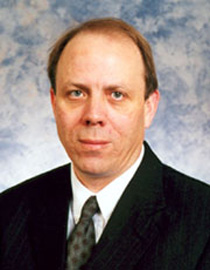
Dr. Hemmer Philip Robert
Academic degree and title: PhD
Job Title: Professor, Texas A&M University
E-mail: prhemmer@ece.tamu.edu
Field of scientific interests
Solid materials for quantum optics, Sub-wavelength imaging, Single molecule imaging, Fluorescent colorcentersin diamond and oxide crystals. Nanoscale magnetometers based on nitrogenvacancydiamond, Ultrasound modulatedoptical tomography, Nanofabrication of surface plasmon structures. Quantum computing and storage in solid materials, Quantum communication and teleportation in with solid materials, Sensitive chemical/biological agent detection using quantum coherence, Ultraslow and stopped light in solids, Materials and techniques for resonant nonlinear optics, Phase-conjugate-based turbulence aberration compensation, Spectral holeburningmaterials and techniques, Holographic optical memory materials, Smart pixels devices, Optical correlators, Photorefractive applications, Laser trapping and cooling, Atomic clocks.
Scientific recognition
1976 — National Science Foundation Fellowship National science foundation
1990 — AFOSR Star Team Award Air Force Office of Scientific Research
1992 — AFOSR Star Team Award Air Force Office of Scientific Research
1994 — AFOSR Star Team Award Air Force Office of Scientific Research
1994 — Air Force Research Laboratory Chief Scientist’s Award
2003 — Ruth and William Neely ’52 Dow, Chemical Fellowship Texas A&M University
2007 — TEES Fellow, Texas Engineering Experiment Station
2010 — TEES Fellow, Texas Engineering Experiment Station
2010 — ED Brocket Professorship, Dwight Look College of Engineering Texas A&M University
2012 — Fellow of the Optical Society of America
Scientific work of the leading scientist, his main scientific achievements
The leading scientist, Dr. Hemmer has contributed significantly to several areas within the field of quantum optics. Perhaps most noteworthy is the seminal and sustained role he has played in identifying new applications of quantum optics based on resonance Raman interactions especially coherent population trapping (CPT) and electromagnetically induced transparency (EIT). Dr.Hemmer has just started developing novel growth techniques for diamond colorcentersthat allowsbottom-up engineering of colorcenters. This is the only way that the exact placement of atoms in diamond can be accomplished. Prior growth and implantation techniques are probabilistic and not suitable for colorcentershaving more than one atom (plus a vacancy). This opens the door to whole new classes of diamond colorcentersas well as scalable quantum registers.
Selected Publications
- Hemmer, P. (2013). Toward molecular-scale MRI. Science, 339(6119), 529-530.
- Hemmer, P., & Gomes, C. (2015). Single proteins under a diamond spotlight. Science, 347(6226), 1072-1073.
- Rogers, L. J., Jahnke, K. D., Metsch, M. H., Sipahigil, A., Binder, J. M., Teraji, T., … & Jelezko, F. (2014). All-optical initialization, readout, and coherent preparation of single silicon-vacancy spins in diamond. Physical review letters, 113(26), 263602.
- Acosta, V., & Hemmer, P. (2013). Nitrogen-vacancy centers: Physics and applications. MRS bulletin, 38(2), 127-130.
- Ge, W., Hemmer, P. R., & Zubairy, M. S. (2013). Quantum lithography with classical light. Physical Review A, 87(2), 023818.